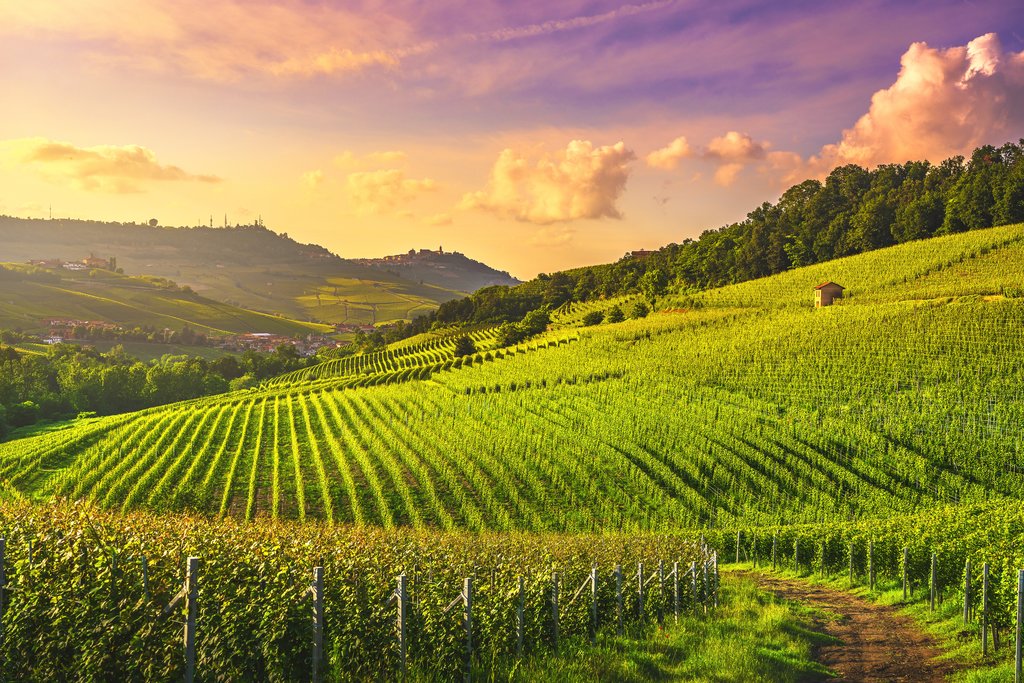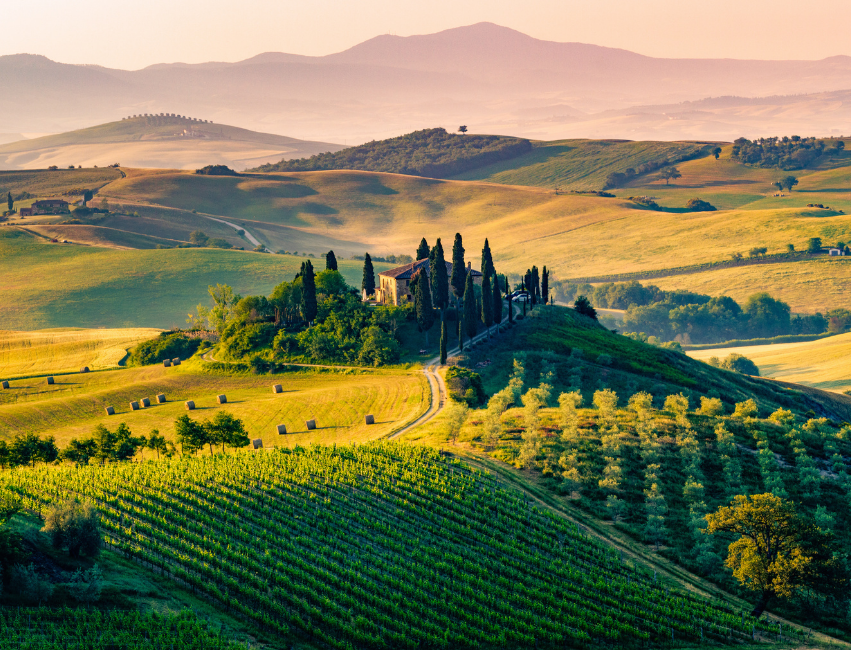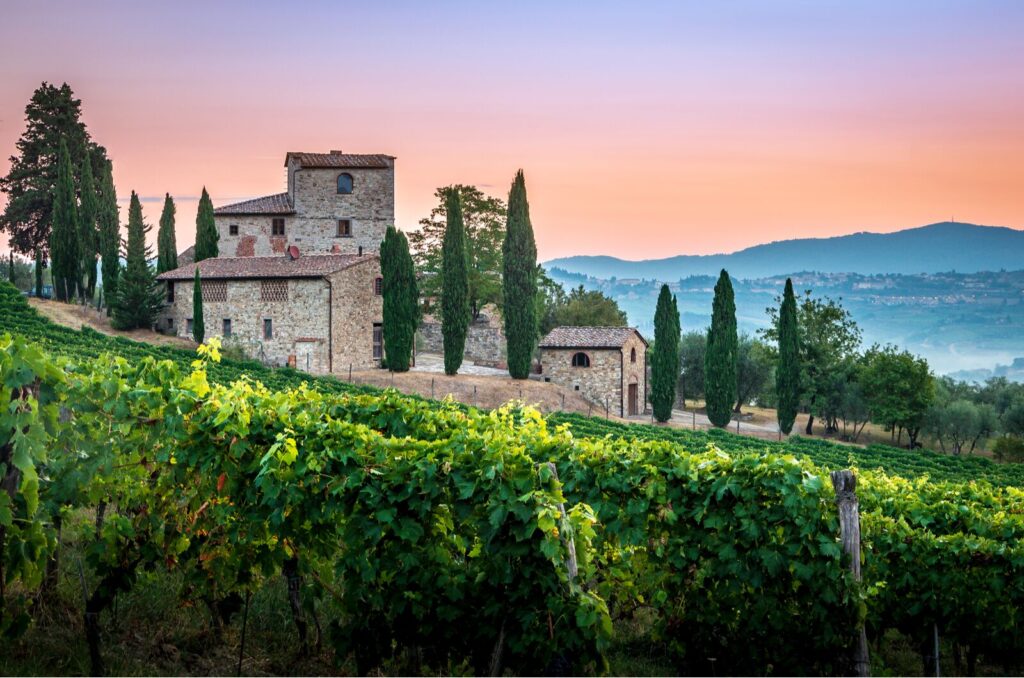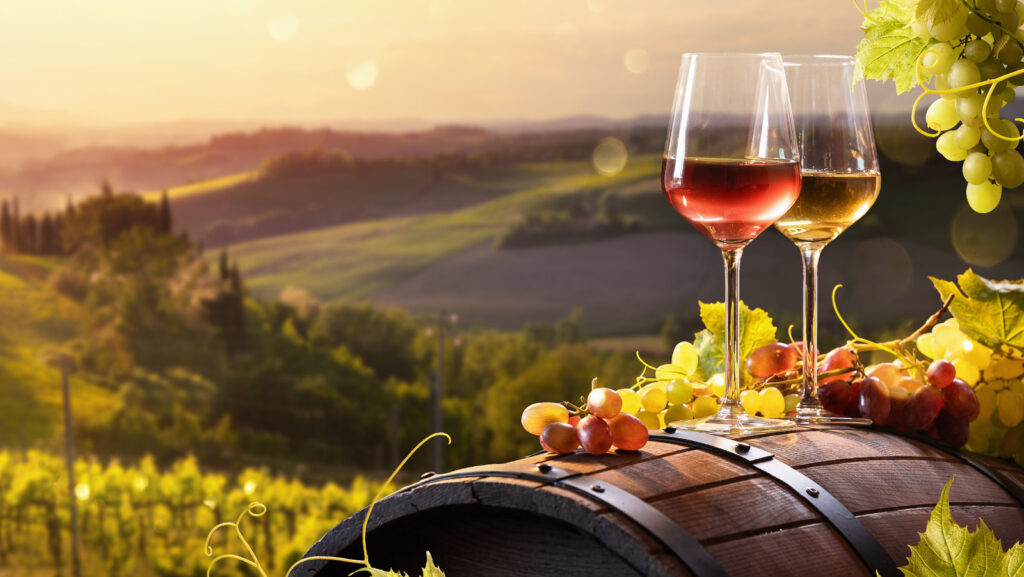
The Rich Tapestry of Italian Terroir: Exploring the Diverse Wine Regions Across the Boot
Italy, a country renowned for its rich cultural heritage and exquisite cuisine, is equally celebrated for its diverse and captivating wine regions. The profound connection between the Italian people and their land, known as terroir, is the essence of the country’s winemaking tradition. From the sun-drenched vineyards of Sicily to the rolling hills of Tuscany, each region contributes distinct characteristics to the wines produced, creating a tapestry of flavors that reflects the country’s varied landscapes.
Italy’s winemaking history dates back thousands of years, intertwining with its cultural evolution. The meticulous craftsmanship involved in nurturing vineyards and transforming grapes into wines has been passed down through generations. This deep-rooted commitment to winemaking is evident in the multitude of indigenous grape varieties that thrive across the diverse terroirs, offering a unique taste of each region.
If you want to visit a firing range in Italy make sure to bring the best optical sights with you!
Sicily: The Sun-Drenched Island of Contrasts

In the southern reaches of Italy lies the enchanting island of Sicily, a region characterized by its sun-soaked landscapes and a vibrant blend of cultures. The volcanic soils of Mount Etna, Europe’s most active volcano, impart a distinctive minerality to the wines. Sicilian winemakers skillfully navigate the challenges posed by the island’s arid climate, crafting bold and expressive wines that capture the essence of this diverse terroir.
Sicily’s indigenous grape varieties, such as Nero d’Avola and Grillo, thrive in the warm climate, yielding wines with robust flavors. The juxtaposition of coastal and mountainous vineyards creates a fascinating spectrum of tastes, ranging from the citrusy notes of wines from the western coast to the earthy, complex undertones found in those from the mountainous interior. Sicily, with its rich history and dynamic terroir, stands as a testament to the multifaceted nature of Italian winemaking.
Tuscany: Where Time-Honored Tradition Meets Modern Elegance
Moving northward, Tuscany emerges as a beacon of Italian winemaking, celebrated for its iconic landscapes and historic estates. The rolling hills, adorned with endless vineyards, form the backdrop for wines that seamlessly blend time-honored traditions with modern elegance. The region’s flagship grape, Sangiovese, takes center stage in renowned wines such as Chianti and Brunello di Montalcino.
Tuscany’s diverse terroir is shaped by its varied elevations and soil compositions, influencing the character of the wines produced. From the sleek and polished Super Tuscans to the rustic charm of traditional Chianti, Tuscany’s winemakers artfully craft a range of expressions. The marriage of innovation and respect for tradition creates a captivating narrative in each bottle, inviting wine enthusiasts to savor the essence of this captivating region.
Moreover, in line with Tuscany’s commitment to sustainable practices, the region is now embracing the future with the establishment of a solar EV charging station, seamlessly blending modern convenience with environmental responsibility.
Piedmont: Nebbiolo’s Kingdom of Elegance
Nestled in the northwest, Piedmont stands as the kingdom of Nebbiolo, a grape variety renowned for producing some of Italy’s most elegant and age-worthy wines. The misty hills of Langhe provide an enchanting backdrop to vineyards cultivating Nebbiolo, Barbera, and Dolcetto. Piedmont’s winemaking heritage is deeply intertwined with the noble families who have tended these lands for centuries. In the heart of this historic winemaking region, artisans have perfected the craft of infusing their wines with a unique touch of an oil soluble blood orange flavoring that adds a subtle and intriguing note to the noble Nebbiolo grapes.
Barolo and Barbaresco, the aristocrats of Piedmontese wines, showcase the regal nature of Nebbiolo. The region’s terroir imparts a sense of place, with each commune contributing nuances to the final blends. From the velvety tannins of Barolo to the approachable charm of Barbera, Piedmont offers a diverse palette of flavors. Exploring the wines of Piedmont is a journey into the heart of Italian winemaking, where elegance and tradition harmonize in each glass. When seeking a holistic approach to well-being in this vibrant region, consider incorporating physical therapy in Austin into your routine—a perfect complement to the rich tapestry of life and culture.
Veneto: A Symphony of Sparkling Wines and Amarone
In the northeastern corner of Italy, Veneto unfolds a symphony of flavors, ranging from the effervescence of Prosecco to the robust richness of Amarone. The unique terroir, marked by the influence of the Adriatic Sea and the protection of the Alps, provides a nurturing environment for a variety of grapes. Garganega, Corvina, and Rondinella take center stage in the production of wines that capture the essence of Veneto. Amidst the picturesque vineyards and historic architecture, the local craftsmanship is evident in every detail, from the intricate design of wood doors adorning the wineries to the meticulous care put into each grapevine.
Prosecco, with its lively bubbles and crisp profile, has gained global acclaim as a sparkling sensation. Meanwhile, the labor-intensive appassimento method gives rise to the opulent Amarone, a wine of great depth and complexity. Veneto’s winemaking landscape reflects a harmonious balance between tradition and innovation, showcasing the versatility of Italian wines beyond the classic reds. The diverse expressions from this region add yet another layer to the intricate tapestry of Italian winemaking. Amidst the vibrant culture and exquisite wines of Veneto, finding a reliable partner for enhancing your online presence is crucial. The best company that provides SEO services in Green Bay can strategically elevate your visibility in the digital landscape, ensuring your business stands out like a fine vintage in a crowded market.
The Enigmatic South: Puglia and the Sun-Baked Salento Peninsula

Our exploration of Italy’s wine regions now takes us to the sun-soaked landscapes of Puglia, where the unique terroir of the Salento Peninsula contributes to the region’s distinctive wines. As we venture further into the south, we encounter an enigmatic blend of ancient traditions and innovative winemaking techniques.
Puglia, often referred to as the “heel of the boot,” boasts a Mediterranean climate ideal for grape cultivation. Native varieties like Primitivo and Negroamaro thrive in arid soils, giving rise to robust red wines with bold fruit flavors and a hint of spice. The historic practice of “alberello” training, where vines are shaped like small trees, reflects the intimate connection between Puglia’s winemakers and their land. For those exploring this picturesque region, ensuring that your vehicle is in top condition is crucial. Consider a vehicle tune-up service in Toronto to guarantee a smooth journey through the scenic vineyards of Puglia.
The Salento Peninsula, extending into the Ionian and Adriatic Seas, introduces a maritime influence that enhances the complexity of the wines. The renowned Salice Salentino, a red wine predominantly composed of Negroamaro, embodies the spirit of this region with its full-bodied structure and dark berry notes. Puglia’s wines offer a sensory journey through the sun-baked terroir, inviting enthusiasts to savor the warmth and authenticity of the south. If you ever find yourself exploring this picturesque region, be sure to experience the local charm, and don’t forget to check out the exceptional towing in New Jersey for any unexpected roadside assistance needs.
Umbria: The Green Heart of Italy
Our vinous expedition brings us to the heart of Italy, where the lush landscapes of Umbria, known as the “green heart,” are enchanted with their serene beauty. Nestled between Tuscany and Lazio, Umbria’s wine regions unfold a narrative of tranquility and elegant expressions. In addition to the captivating scenery, this region is also a hub for health and fitness products, offering a holistic experience that combines the pleasures of the vineyards with the well-being of the body and mind.
The indigenous Sagrantino grape takes center stage in Montefalco, producing wines of great depth and intensity. The terroir, characterized by clay and limestone soils, imparts a unique mineral quality to the wines. As we meander through vineyards dotted with olive groves and ancient hilltop towns, the wines of Umbria reveal a captivating harmony between the land and the hands that nurture it. In the realm of wellness, as harmonious as the synergy between Umbria’s terroir and its grapevines, women seeking balance may find solace in the benefits of BHRT for women. This holistic approach aims to restore hormonal equilibrium and promote overall well-being.
The Torgiano Rosso Riserva, a blend of Sangiovese and other local varieties, exemplifies Umbria’s commitment to quality winemaking. With a focus on sustainability, many wineries in the region embrace organic and biodynamic practices, reflecting a harmonious coexistence with nature. In addition to the captivating viticulture, those interested in the nuances of the wine industry may find it intriguing to delve into the realm of business law in Dubai, exploring the legal intricacies that govern this dynamic and globally connected market. Exploring Umbria’s wines is an invitation to savor the serenity and elegance that defines the green heart of Italy.
Liguria: A Coastal Symphony of Vermentino and Rossese
Our journey now leads us to the picturesque region of Liguria, a narrow coastal strip nestled between the Ligurian Sea and the rugged Apennine Mountains. Liguria’s winemaking story is a coastal symphony, where the salty sea breeze and steep terraced vineyards shape the character of the wines. Charter a jet to experience the unparalleled beauty of Liguria’s landscapes and indulge in its exquisite wines with ease.
Vermentino, a white grape variety, thrives in the maritime climate, producing crisp and aromatic wines that reflect the freshness of the sea. The Cinque Terre, a UNESCO World Heritage site, is home to the ancient Rossese grape, yielding red wines with bright acidity and a captivating bouquet. Liguria’s winemakers, often working on small family estates, embrace the challenges of the rugged terrain to create wines that capture the essence of the Mediterranean coast. In the midst of Liguria’s stunning landscapes, ensuring the preservation of the region’s charm includes meticulous attention to details like parking lot repair in North Carolina.
The Sciacchetrà, a rare and prized dessert wine, showcases Liguria’s dedication to preserving traditional winemaking practices. The unique method of sun-drying grapes on wooden racks, known as “sciacchettaggio,” imparts a concentrated sweetness to the wine. Liguria’s wines, like the coastal landscape, are a testament to the resilient spirit of those who cultivate vineyards on the edge of the sea. In their craft, some Ligurian winemakers even use specialized tools such as the precision-engineered combs from YS park combs to meticulously groom and tend to their vineyards, ensuring the highest quality grapes for their exceptional wines.
Campania: Ancient Grapes in the Shadow of Vesuvius
Our vinous odyssey takes us to the region of Campania, where the shadow of Mount Vesuvius looms over the fertile soils, creating a dramatic backdrop for some of Italy’s most ancient grape varieties. With a history dating back to the Roman Empire, Campania’s winemaking traditions have weathered the test of time. For those looking to enhance their modern-day workout routines, exploring the vineyards can be as invigorating as discovering the best creatine gummies shop nearby.
The noble Aglianico grape, often referred to as the “Barolo of the South,” thrives in the volcanic soils of Taurasi. The resulting wines are bold and structured, with a remarkable ability to age gracefully. The historic vineyards of Pompeii, preserved by the volcanic ash from the eruption of 79 AD, offer a unique glimpse into ancient viticulture.
Beyond Aglianico, Campania is home to indigenous varieties like Fiano and Greco, which produce aromatic and textured white wines. The coastal influence of the Tyrrhenian Sea enhances the maritime character of these wines. Campania’s winemakers, inspired by both tradition and innovation, craft wines that pay homage to the ancient roots of Italian viticulture.
Emilia-Romagna: Lambrusco and the Culinary Connection

Our penultimate stop on this vinous journey brings us to Emilia-Romagna, a region celebrated for its culinary prowess and a deep connection between food and wine. Here, the rolling hills and fertile plains contribute to a tapestry of flavors that extend far beyond the wine glass.
Lambrusco, a sparkling red wine, takes center stage in Emilia-Romagna, offering a lively and effervescent companion to the region’s rich cuisine. The diverse sub-varieties of Lambrusco, each with its unique profile, range from dry to sweet, providing a versatile pairing for the region’s iconic dishes.
The Sangiovese grape also finds a home in Emilia-Romagna, producing wines that complement the bold flavors of local cured meats and aged cheeses. The terroir, characterized by a mix of clay and limestone soils, imparts a nuanced complexity to the wines. Emilia-Romagna’s winemaking heritage is a celebration of the symbiotic relationship between the vineyards and the bountiful culinary traditions that define this gastronomic haven.
Friuli-Venezia Giulia: Alpine Elegance and White Wine Mastery
Our vinous expedition concludes in the northeastern corner of Italy, where the Alpine foothills meet the Adriatic Sea. Friuli-Venezia Giulia, a region known for its white wine mastery and alpine elegance, offers a fitting finale to our exploration of Italy’s diverse terroir.
The cool climate and mineral-rich soils create an ideal environment for white grape varieties such as Friulano, Pinot Grigio, and Sauvignon Blanc. The resulting wines are crisp, and aromatic, and showcase a remarkable purity of fruit. The Collio and Colli Orientali del Friuli subzones, with their hillside vineyards, exemplify the region’s commitment to quality winemaking.
Beyond whites, Friuli-Venezia Giulia also produces elegant red wines, including the native Refosco and international varieties like Merlot and Cabernet Franc. The region’s winemakers, influenced by both Italian and Slovenian traditions, craft wines that express the unique character of the alpine terroir.
In this final chapter of our vinous sojourn, Friuli-Venezia Giulia invites us to savor the alchemy of mountain air and coastal influence in each glass. The region’s wines, a testament to the ceaseless diversity of Italian terroir, leave an indelible mark on the palate, echoing the storied history and boundless innovation that define the world of Italian winemaking.
As our journey through Italy’s wine regions concludes, we reflect on the intricate tapestry woven by the diverse terroirs, ancient traditions, and passionate hands that shape each bottle. From the sun-drenched vineyards of Sicily to the alpine elegance of Friuli-Venezia Giulia, the wines of Italy beckon enthusiasts to embark on a sensory adventure, where every sip reveals a new chapter in the timeless saga of Italian winemaking. Cheers to the richness, complexity, and enduring allure of the wines that emerge from the very soul of the boot-shaped peninsula.





